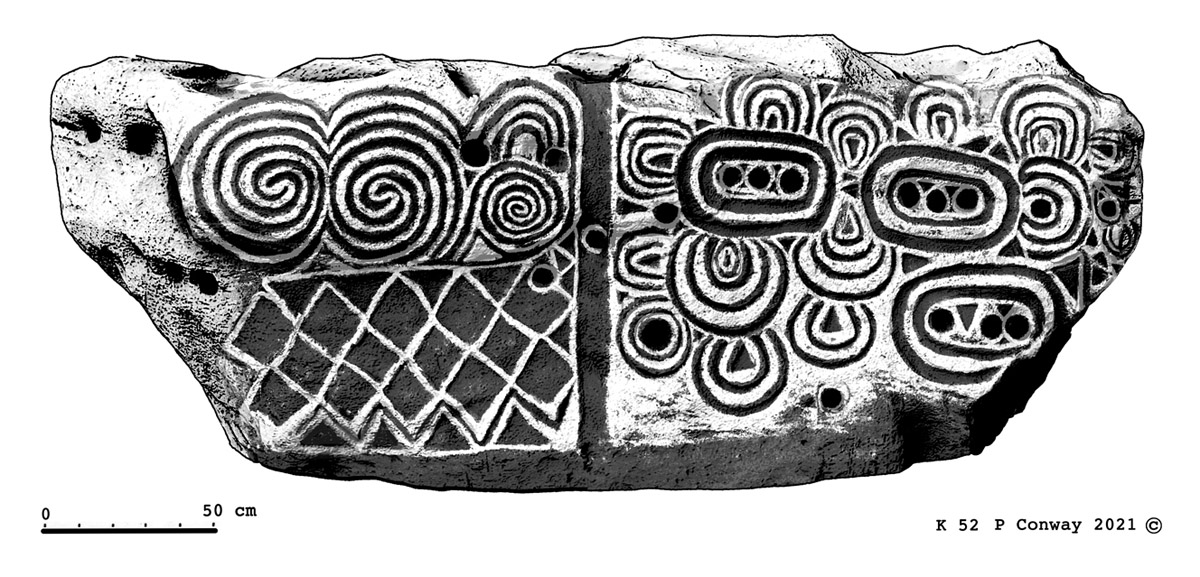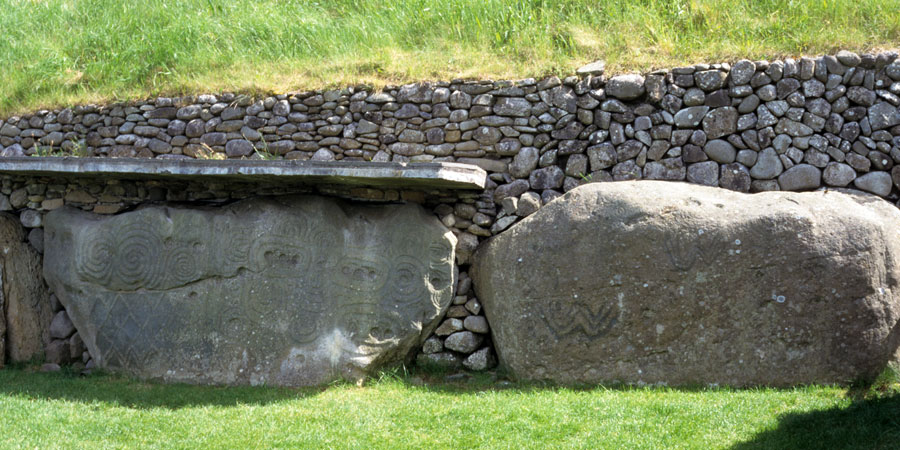Kerbstone 52
The layout, design and carving of Kerbstone 52, found on the opposite side of Newgrange to the Entrance Stone, is as accomplished and complex as the Kerbstone 1, and may well have been carved by the same artist. The stone chosen to be engraved was divided in two by a broad channel which runs down the centre, and because of location and design, it has long been speculated that the entrance to another passage would be found behind Kerbstone 52. This huge slab, four meters in length, has a distinctly bovine feel to it, which makes sense in the context of the Newgrange mythology: Boann, the member of the Tuatha De Danann associated with the river Boyne, is Ireland's Bronze age or even neolithc cow goddess.
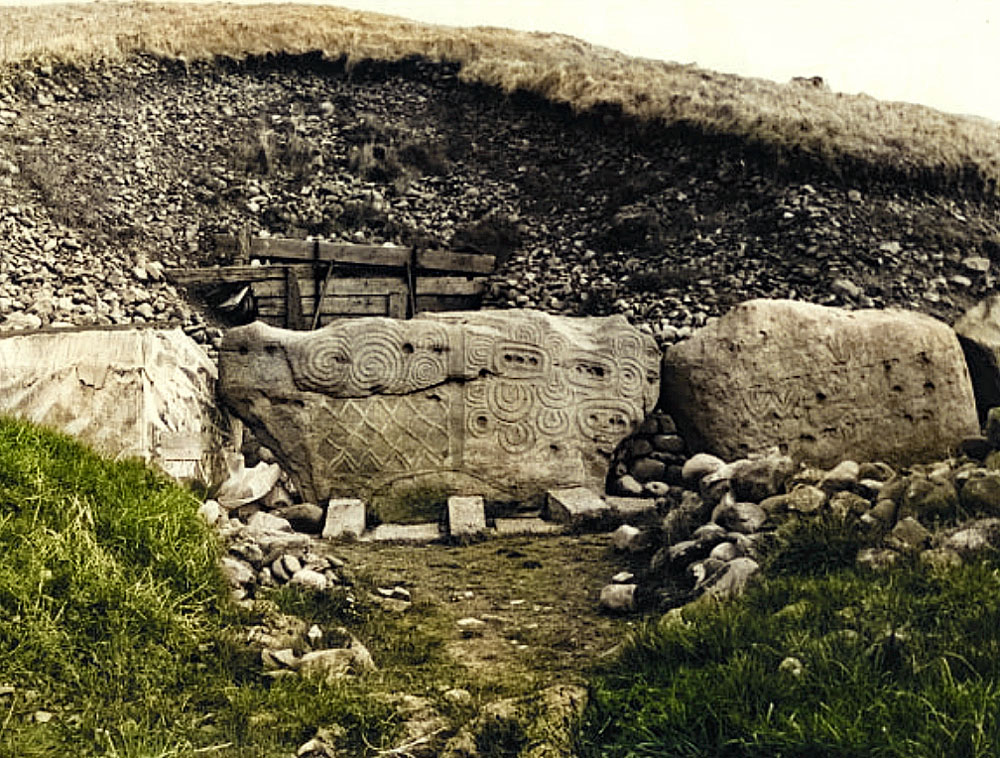
The artwork on Kerbstone 52 is quite beautiful and almost alien in quality. On the right side of the stone, a complex essay on the number three takes place, in a design that seems somewhat exotic in the corpus of Irish meolithic art, though there is a parallel or imitator at Knockmany in County Tyrone. Along with the Entrance Stone, Kerbstone 52 divides the mound in two along an southeast to northwest axis and faces the summer solstice sunset, an alignment also found at Cairn G in Carrowkeel and Shee Lugh on the ridge of Moytura.
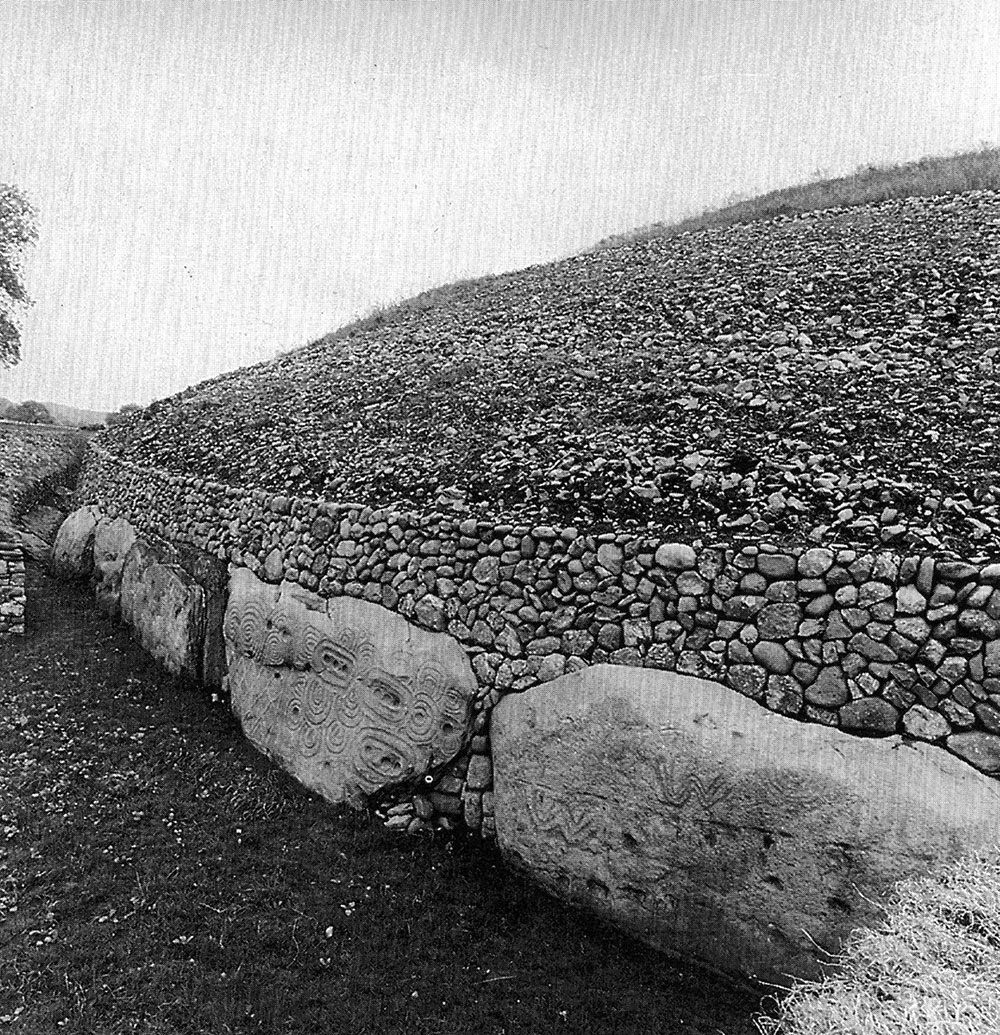
At some stage before the great mound was added, you could have stood here and looked over the stone, across the site of the chamber, and down the passageway: in other words, during the 'setting out' and surveying of Newgrange, the primary solstice alignment was marked on the two main kerbstones.
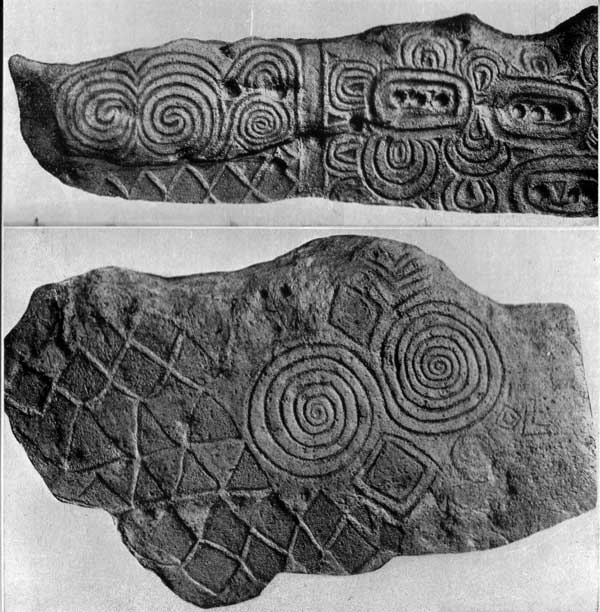
The three groups of three have always reminded me of plug sockets, and this may make sense in the context of Leylines or energy lines. Michael Poynder in his book, Pi in the Sky, talks about a large energy line crossing Ireland from Knocknarea to Newgrange, and believes that these three symbols represent the three strands of the line.
The left side has a set of 14 lozanges on the lower portion, with a set of spirals above. Poynder believes that the lozanges are a symbol or unit of length, showing the distance to Queen Maeve's Cairn on the west coast.
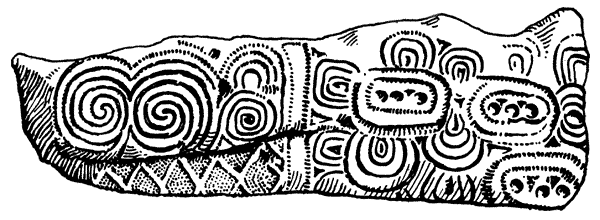
The Turf Mound
Researchers have long believed that a second undiscovered passage may remain hidden behind Kerbstone 52, because of the quality of the carving, the location and the vertical groove. Investigations by Michael O'Kelly late in the late 1960's failed to find anything of substance here. O'Kelly did however find a turf layer which seems to be part of the remains of an earlier monument or phase of Newgrange. The cairn of Newgrange bulges somewhat at this point, highly likely to be an part of the earlier, smaller mound here which was incorporated into the great mound. This seems likely, as a building of this size and complexity would have been developed in several phases.

It is now understood that the huge mound at Knowth is constructed around an earlier inner core. Dowth may also have been built over a smaller and earlier monument. It is also understood that stones from both Newgrange and Knowth were recycled from older buildings.

